EV Charger Comparison Table
Last Updated: 15th May 2024
Compare EV charger prices and specifications side-by-side. This comparison tool lists standard and smart electric vehicle charging solutions currently available in Australia. For recommended brands, see the chart in the notes below the table.
|
Hit ‘Expand’ for full screen. Scroll within the table to see all the rows and columns. Explanatory notes are included below the table. Corrections, additions or feedback? Contact us. |
| Product Name | Tesla Gen 3 Wall Connector | Fronius Wattpilot | myenergi Zappi | GoodWe HCA Series | Sungrow AC22E-01 | SolarEdge ONE EV Charger |
Sigenergy AC EV Charger
|
Victron EV Charging Station | Evnex E2 |
Ohme Home Pro
|
Wallbox Pulsar Max
|
iStore EV Charger |
Delta AC MAX (smart)
|
Smappee EV Wall | Teltonika TeltoCharge | Enphase IQ EV Charger 2 | ABB Terra Wallbox |
EO Mini Pro 2
|
Schneider Charge | ZJ Beny AC EV Charger |
Ocular IQ Solar
|
Scame BE-W Net | Soltaro EV Charger | Weidmuller AC SMART |
EVOS Fleet22
|
Anker Solix V1 Smart EV Charger | SolaX G2 |
|---|---|---|---|---|---|---|---|---|---|---|---|---|---|---|---|---|---|---|---|---|---|---|---|---|---|---|---|
| Manufacturer Logo |
 |
 |
 |
 |
 |
 |
 |
 |
 |
 |
 |
 |
 |
 |
 |
 |
 |
 |
 |
 |
 |
 |
 |
 |
 |
 |
 |
| Product Image |
 |
 |
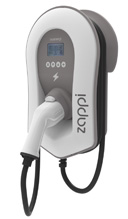 |
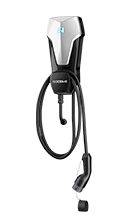 |
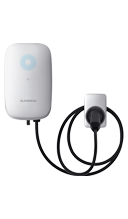 |
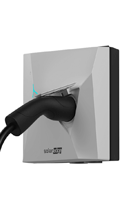 |
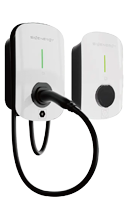 |
 |
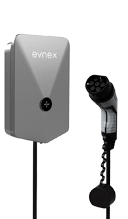 |
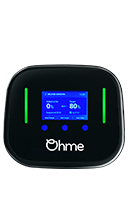 |
 |
 |
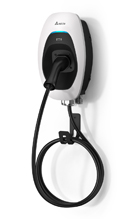 |
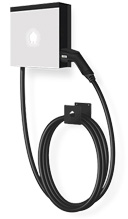 |
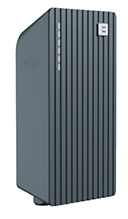 |
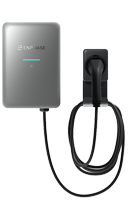 |
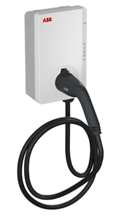 |
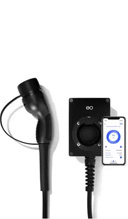 |
 |
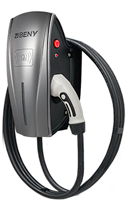 |
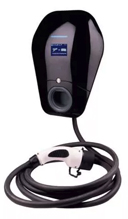 |
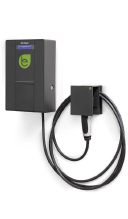 |
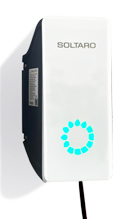 |
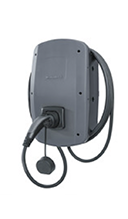 |
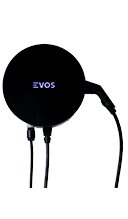 |
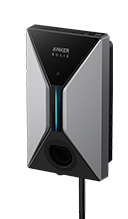 |
 |
| Product variant | |||||||||||||||||||||||||||
| Price (Approx. AUD price RRP inc. GST) | $800 | $1,800 | $1,595 | $850 | $950 | $1,200 | $1,200 | $1,000 | $1,395 | $1,395 | $1,400 | $1,200 | $1,990 | $1,729 | $1,450 | $2,048 | $2,000 | $1,495 | $1,500 | $750 | $1,400 | $1,800 | $1,050 | $800 | $1,800 | $800 | $750 |
| Single phase or three phase? | Both | Both | Single-phase | Single phase | Both | Both | Single phase | Both | Single-phase | Single phase | Single-phase | Single phase | Single-phase | Single-phase | Single phase | Both | Single phase | Single-phase | Both | Single phase | Single-phase | Single phase | Single phase | Single phase | Both | Single phase | Single phase |
| Rated power | 7 kW (1 ph), 22 kW (3 ph) | 22 kW | 7 kW | 7 kW | 22kW | 22 kW | 7 kW | 22kW | 7.4 kW | 7.4 kW | 7.4 kW | 7.4 kW | 7.4 kW | 7 kW | 7.4 kW | 22kW | 7.4 kW | 7.2 kW | 7-22 kW | 7.4kW | 7 kW | 7.4 kW | 7kW | 7kW | 7-22kW | 7.4kW | 7.2kW |
| Rated current | 32A per phase | 6-32 A | 32A max | 32 A | 32A | 32A | 32A | 32A | 32 A | 32A | 32 A | 32A | 32 A | 32 A | 32A | 32A | 32A | 32 A | 16-32 A | 32A | 32 A | 32A | 32A | 32A | 32A | 32A | 32A |
| Country of manufacture | China | Austria | United Kingdom | China | China | China | China | Netherlands | New Zealand | China | Spain | China | Unknown - manufacturer unresponsive | Belgium | Lithuania | TBD | Italy | United Kingdom | China | China | China | Italy | China | Germany | Australia | China | China |
| Enclosure dimensions | 345 x 155 x 110 mm | 155 x 110 x 260 mm | 439 x 282 x 122mm | 208 × 450 × 150 | 214 x 346 x 125 mm | 235 x 230 x 130 mm | 234 x 384 x 126 | 390 x 300 x 150 mm | 286 x 185 x 66 mm | 200 x 170 x 100 mm | 204 x 313 x 142 mm | 380 x 169 x 151 mm | 218 x 371 x 167 mm | 300 × 300 × 110 mm | 170 mm x 341 mm x 94 mm | 370 × 250 × 118 mm | 320 x 195 x 110 mm | 175mm x 125mm x 125mm | 352 x 244 x 117 mm | 169 x 380 x 151 mm | 269 x 360 x 146 mm | 235 x 370 x 115 mm | 368 x 168 x 215 mm | 268 x 433 x 150 mm | 380 x 100mm | 211 x 360 x 120 mm | 206 × 390 × 139 mm |
| Weight | 6.8 kg | 2 kg | 5.5 kg | 6 kg | 6.6 kg | 1.8 kg | 6.4 kg | 3 kg | 2.3 kg | 4 kg | 2.5 kg | 7 kg | 3.8 kg | 9.8 kg | 2.8 kg | 11 kg | 6.5 kg | 1.3 kg | 3.2 kg | 9 kg | 7.6 kg | 6.2 kg | 8 kg | 5.1 kg | 6.5 kg | 4.95 kg | 6.5 kg |
| PIN/physical lock? | No | Yes | Yes | Yes | No | Yes | RFID | Unknown - manufacturer unresponsive | No | No | Yes | No | No | Unknown - manufacturer unresponsive | Card authorisation | No | No | Unknown - manufacturer unresponsive | Yes | Yes | Yes | No | Optional | RFID on "Value" and "Advanced" models | Lock via app/VID to authorised user | No | Yes |
| Multi-user support | Yes | No | No | Yes | No | Yes | No | No | Yes | Yes | Yes (Super-user can create multiple user profiles for different people) | Yes | Yes (RFID card) | Yes | Yes | Yes | No | No | No | Yes | Yes | Yes | Optional | On "Advanced" model | Yes | No | No |
| Charge cable length | 7.3 meters | N/A | 6.5 meters | 6 meters | 5m / 7m | N/A | 5 m | N/A | 5 meter, 8 meter | 5m / 8m | 5 meters (optional 7 meters) | 7 meters | 5 meters | 8 meters | 5m | 7.5 m | 5m or 7.6m | 5 meters | Untethered, 5m cable or 7m cable | 6 meters | 5 meters | 4m (single phase) 4m/7.5m (three phase) | 6m default | 5m, 7m, 10m | 5 or 6 meters | 7 meters | 6.5m |
| Display | No | No | Yes | No | LED | No | LED | Yes | Yes | Yes - LCD Screen and LED charging status bar | No | LED | No | No | No | LED | Yes | No | Yes (LEDs) | Yes - charging indicator | Yes | Yes | LEDs | No | LED colour status | LED | LED |
| Standby power consumption | < 5W | < 5W | 3W | <6 W | <5W | <5 W | <3.6W | <5W | <4 W | <5W | 5W | 2W | < 2.6 W | < 5W | 4W | <5W | <5W | < 5W | <3W | < 5W | Unknown - manufacturer unresponsive | <5 W | 2W | <5W | <8W | <5W | <5W |
| Charging modes | Fast, scheduled | Eco Mode, Next-Trip Mode (both use Solar Surplus), Time Scheduler | 3 mode - Eco, Eco+, Fast | Fast charge, charging from PV only and charging from PV & Battery only. | Solar-only, fast | Smart schedules, excess solar charging | 100% PV charging / Solar boost charging / Fast charging | Manual mode/Automatic mode | Solar-only, Solar with Grid Fallback, Fast and Dynamic Load Balancing | Dynamic Load Balancing & Solar Compatible | Power boost, Eco-smart, Eco-mode | Standard, solar-only | Unknown - manufacturer unresponsive | Solar-only, scheduled, fast | Solar/Dynamic load balancing | Solar-only, fast | Unknown - manufacturer unresponsive | Solar-only, fast | Custom schedule, "Reduce my bill" mode, dynamic load balancing | Multiple - see datasheet | Unknown - manufacturer unresponsive | Ecoplus, Ecosmart, Full | Full Speed, Solar Optimised, Hybrid | Solar, fast | Solar only, Dynamic Load Balancing, Time Schedule, Tariff Schedule, Load Balancing. | Fast, solar-only | Solar-only, fast |
| Solar Smart Charging | No | Yes | Yes | Yes - only if paired with a Goodwe inverter | Yes | Yes | Yes | Yes | Yes | Yes | Yes | Yes | Yes | Yes | Yes | Yes | With additional hardware | Yes (extra cost) | Yes - requires additional hardware | Yes | Yes | No | Yes | On "Value" and "Advanced" models | Yes | Yes | Yes |
| Internet connection? | Yes | Yes | Yes | Yes | Yes | Yes | Yes | Yes | Yes | Yes | Yes | Yes | Yes | Yes | Yes | Yes | Yes | Yes | Yes | Yes | Yes | Yes | Yes | Yes | Yes | Yes | Yes |
| App control | Yes | Yes | Yes | Yes | Yes | Yes | Yes | Yes | Yes | Yes | Yes | Yes | Yes | Yes | Yes | Yes | Yes | Yes | Yes | Yes | Yes | No | No | Yes | Yes | Yes | Yes |
| 3 to 1 phase smart switching | No | Yes | Yes | No | TBD | Yes | No | Not yet - hardware upgrade due Q2 2024 | No | No | Unknown - manufacturer unresponsive | TBD | No | Yes | Yes | Yes | Unknown - manufacturer unresponsive | Unknown - manufacturer unresponsive | No | Unknown - manufacturer unresponsive | No | No | No | On "Value" and "Advanced" models | Yes | TBD | No |
| OCPP1.6 compatible? | No | Yes | Yes | No | Yes | Yes | Yes | Not yet - software update due 'soon' | No | Yes | Yes | Yes | Yes | Yes | Yes | Yes | Yes | No | Yes | Yes | Yes | Yes | No | On "Value" and "Advanced" models | Yes (upgradable to 2.0) | Yes | Yes |
| IP rating | IP 55 | IP 55 | IP 65 | IP 66 | IP 65 | IP 54 | IP 65 | IP 44 | IP 55 | IP55 | IP 54 | IP 65 | IP 55 | IP 54 | IP 55 | IP 55 | IP 54 | IP 54 | IP 55 | IP55 | IP 54 | IP54 | IP 65 | IP 54 | IP 65 | IP 65 | IP65 |
| Operating temperature | -30 °C to 50 °C | -25 ºC to +40 ºC | -25°C to +40°C | -30 ~ +50 C | -30 ℃ - 50 ℃ | -30~50°C | -30 - +55 °C | -25 - +50 °C | -25°C to 55°C | -25°C to 45°C | -25 ºC to 50 ºC | -25°C ~ 55°C | -30 ºC to +50 ºC | -25 °C to 40 °C | -30ºC - +50ºC | -40°C to 55°C | -35 - +50 °C | -10 °C to 50 °C | -30 ºC to 50 ºC | -25°C - +55°C | -30 ºC to 50 ºC | -30°C to +50°C | -25-55 C | -30 °C to +50 °C | -25 °C to 55 °C | -30°C to 50°C | -25 to 50°C |
| Bi-directional? | No | No | No | No | No | No | No | No | No | No | No | No | No | No | No | V2X "capable" with software unlock | No | No | No | No | No | No | No | No | No | No | No |
| Warranty (years) | 4 years | 2 years | 3 years | 2 | 3 | 3 years | 3 years | 5 years | 3 years | 3 years from installation date | 2 years | 3 years | 2 years | 3 years | 3 years | 5 | 2 years | 3 years | 2 years | 3 years | 2 years | 4 years | 3 years | 2 years | 2 years | 3 years | 3 years |
| On our recommended chart? | Yes | Yes | No | Yes | Yes | Yes | Yes | No | No | No | Yes | Yes | Yes | No | No | Yes | Yes | No | Yes | No | Yes | No | No | No | No | No | No |
| Notes | Free Evnex Residential App, Carbon Tracking, Electricity Tariff Setting, Charging Session History, and Charging Schedule. | Available both tethered and untethered | Free "MyEVOS" app for stop/start/restart, tariff selection and historical charging data | ||||||||||||||||||||||||
| Datasheet Supplied? | Tesla Wall Connector datasheet | Fronius Wattpilot datasheet | Zappi datasheet | Goodwe HCA datasheet | Yes | SolarEdge ONE EV Charger datasheet | Sigenergy AC EV Charger datasheet | Victron EV Charging Station datasheet | EVNex E2 datasheet | Ohme Home Pro datasheet | Wallbox Pulsar Max datasheet | iStore EV Charger datasheet | Delta AC Max datasheet | Smappee EV Wall datasheet | Teltonika TeltoCharge datasheet | Yes | ABB Terra Wallbox datasheet | EO Mini Pro 2 datasheet | Schneider Charge datasheet | ZJ Beny AC EV Charger datasheet | Ocular IQ Solar datasheet | Scame BE-W Net datasheet | Soltaro EV Charger datasheet | Weidmuller AC SMART datasheet | EVOS Fleet22 datasheet | No | Yes |
| Warranty Supplied? | Tesla Wall Connector warranty | Fronius Wattpilot warranty | Zappi warranty | Goodwe HCA warranty | Yes | SolarEdge ONE EV Charger warranty | Sigenergy AC EV Charger warranty | Victron EV Charging Station warranty | EVNex E2 warranty | Ohme Home Pro warranty | Wallbox Pulsar Max warranty | iStore EV Charger warranty | Delta AC Max warranty | No | Teltonika TeltoCharge warranty | Yes | ABB Terra Wallbox warranty | No | Schneider Charge warranty | ZJ Beny AC EV Charger warranty | Ocular IQ Solar warranty | Scame BE-W Net warranty | Soltaro EV Charger warranty | Weidmuller AC SMART warranty | EVOS Fleet22 warranty | No | Yes |
| Modern slavery statement or forced labour policies? | TBD |
No response from manufacturer. |
Under development as of August 2024 |
No response from manufacturer. |
No response from manufacturer. |
No response from manufacturer. |
No response from manufacturer. |
TBD | TBD | ||||||||||||||||||
| More information on brand | Here | Here | Here | Here | Here | Here | Here | Here | Here | Here | Here | Here | Here | Here | Here | Here | Here | Here | Here | Here | Here | Here | Here | Here | Here | Here | Here |
PIN/Physical Lock
A physical safety lock stops a charger from being removed while charging is taking place.
Some products can also be electronically locked using a Personal Identification Number (PIN), preventing unauthorised operation when the EV is plugged in, or just when it’s unplugged, or all the time. While the likelihood of a stranger’s EV rocking up in your driveway to top up is probably pretty low, these are strange times and the PIN lock can be useful.
Multi-User Support
This refers to inverters that can communicate wirelessly when you have two or more in use at the same time; to balance charge between electric vehicles. Many OCPP compatible inverters can do this. This feature is mainly used at commercial charging stations.
Charge Cable Length
This is really important. EV charging cables are available in different lengths. While a longer cable provides more flexibility, it will add to the cost of the system. When deciding on charge cable length, think about where the port is located on your vehicle. Will you need the ability to access it regardless of whether your car is parked with the port facing the charger or away from it? What about if the car is parked behind another vehicle?
Charging Modes
Some products are “smart chargers”. That means they allow a great degree of control over how your vehicle is charged – and when.
For example, you can schedule charging during off-peak periods or other times when electricity prices are low. Or in some cases to work with your solar power system in a smarter way to maximise self-consumption. Another advanced feature is advanced dynamic load balancing, which will switch other large household loads automatically when an EV is charging to prevent your home’s electricity supply from tripping.
When comparing smart EV chargers, bear in mind the advanced features they offer can differ. Be sure on what features you want or need, and whether you really need them at all.
Solar Smart Charging
Solar smart chargers can be set to only charge your from your surplus solar.
Since the money you get for sending electricity back to the grid (feed-in tariffs) is a lot lower now, it’s better to use that extra solar power to charge your electric car instead of sending it to the grid
For example, a feed in tariff might be 8c per kilowatt hour, but the grid rate is 28c. “Filling up” with 50 kilowatt-hours of solar will cost $4 in terms of the missed feed-in tariff. But to draw the same amount of energy from mains supply will cost $14 – 3.5 times more expensive
So, how does a solar smart EV charger “know” when there is surplus solar energy available? Either with a “CT” current sensor in your switchboard, or by talking too your inverter.
To learn more on the topic of electric vehicle charging and solar, check out my 101 Guide To EV Chargers.
3 To 1 Phase Smart Switching
EV chargers with a ‘solar only’ mode require at least 4.2 kW in 3-phase mode or 1.4 kW in single-phase to start charging. Smart 3-phase chargers can ‘downshift’ from 3-phase to single phase if solar power supply is below 4.2kW.
OCPP1.6 Compatible
OCPP1.6 compatibility means the charger can be controlled by a third party smart app that can also interface with solar inverters and home batteries.
IP Rating
This is an important specification to compare. The IP rating refers to Ingress Protection – the ability of a charger’s enclosure to resist dust and particulates (the first number), and moisture (the second). The higher the IP numbers, the better protection provided. In the case of chargers, look for IP65 – meaning it’s suitable for outdoor use.
Important: the IP rating doesn’t indicate how well the enclosure will stand up to the sun beating down on it day after day. As with solar inverters, you should install chargers out of direct sunlight. If this isn’t possible in your installation situation, then you should have a cover/shroud that will provide suitable shade also installed.
Bi-Directional Charging
Just about all electric car chargers currently available only work one-way – from the energy source to the vehicle. But bi-directional charging will enable V2G (Vehicle To Grid) and V2H (Vehicle To Home) applications; taking advantage of the fact an EV is essentially a big battery on wheels.
The one bi-directional charger available in Australia at the moment is incredibly expensive, but expect prices to drop as other products become hit the market here. Also note very few EV models in Australia currently support V2H/V2G.
Modern Slavery/Forced Labour
This row indicates if we found the EV charger manufacturer has policies for addressing modern slavery/forced labour risks. TBD indicates this is yet to be determined and “failed to respond” indicates our enquiries did not receive a reply. Where provided, in-depth analysis of an EV charger manufacturer’s statement/policy has not been performed.
Warranties
The warranty on electric vehicle chargers is generally between 1 and 3 years – but not all warranties are equal. When comparing warranties, don’t just look at their duration but also the conditions. We’ve provided links in the comparison table above to those documents.
Note: We strive to keep EV charger comparison information up to date and to add new products as they become available. However, mistakes may be made and information can become rapidly outdated given the pace at which electric vehicle charging solutions are evolving. Warranty details can also change without warning. For these reasons, we advise confirming details with an EV charger manufacturer or installer before making a purchase decision to ensure you’re buying the best charger for your circumstances.
Which Is The Best EV Charger?
The best EV charging solution for you will depend on your circumstances. And really, most of these devices haven’t had enough time operating in Australian conditions to make a conclusion as to which are best. But the following chart shows all the brands available in Australia I’ve heard good things about from installers and EV owners that I’m comfortable in recommending.
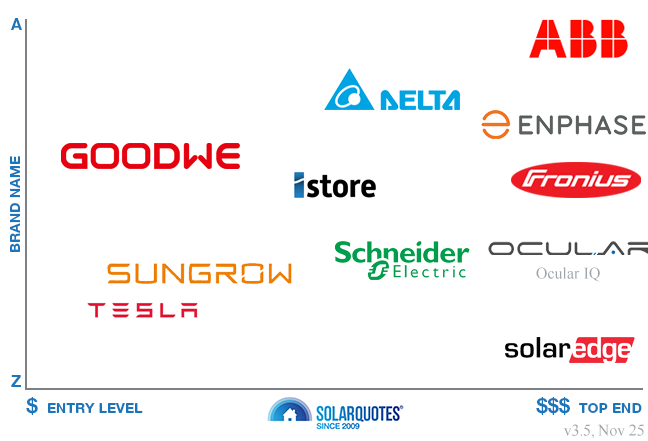
You may be wondering why the Zappi – a pretty popular device – isn’t on the chart. That’s because I’ve had three fail on me, along with two Zappi charging cables. Here’s hoping the V2 Zappi will prove to be more reliable in Australian conditions.
More Information On EV Charging
You can learn everything you need to know about charging an electric vehicle in my EV Charger 101 guide – it contains a bunch of useful information, all clearly explained.
Expert Advice And Quotes For EV Charger Installations
Not sure which electric car charger is right for you?
If you’re getting ready to install an EV charging solution at your home or business, SolarQuotes can help. We can connect you with expert, pre-vetted installers servicing your area who will advise you on the best solution for your needs and provide a quote for supply and installation.
